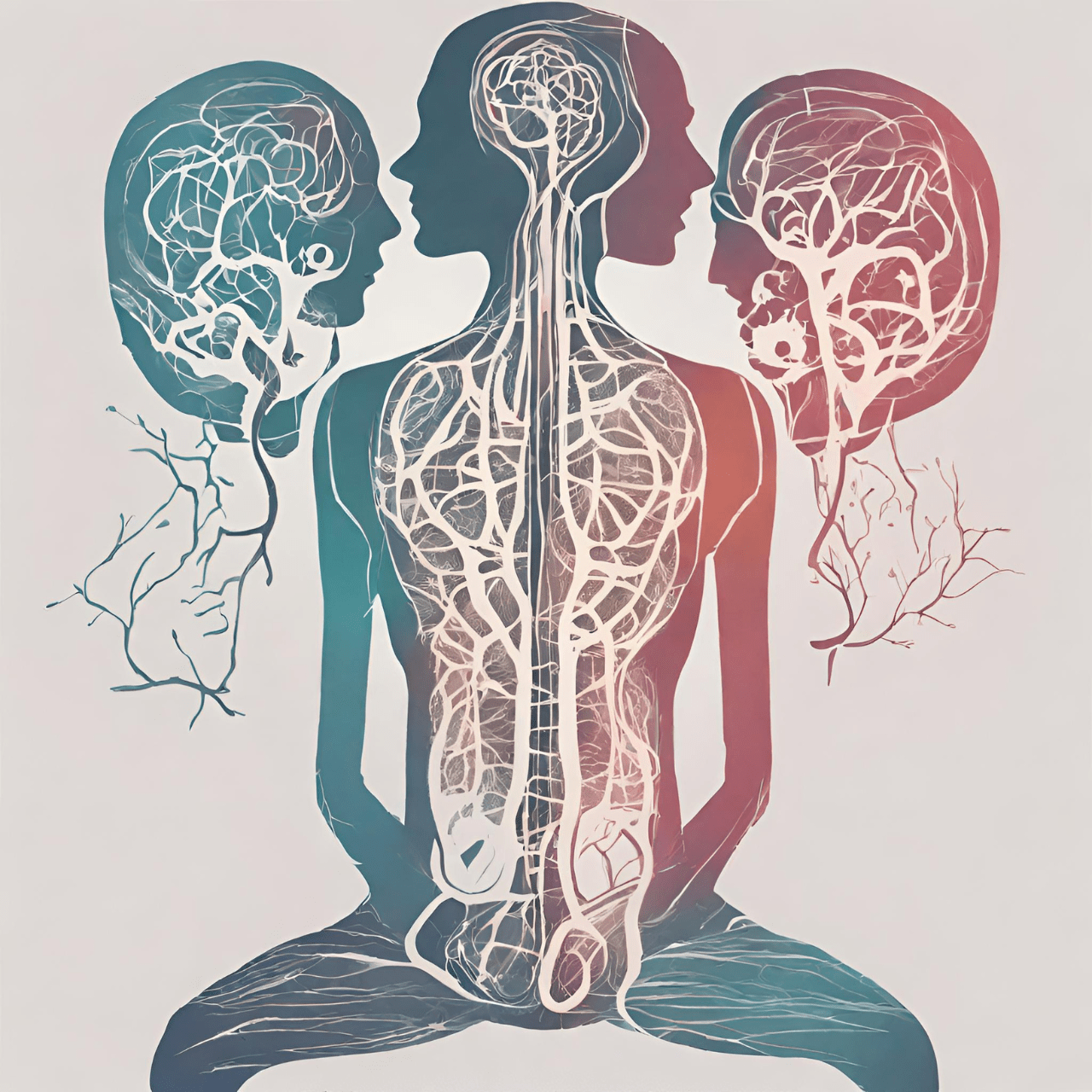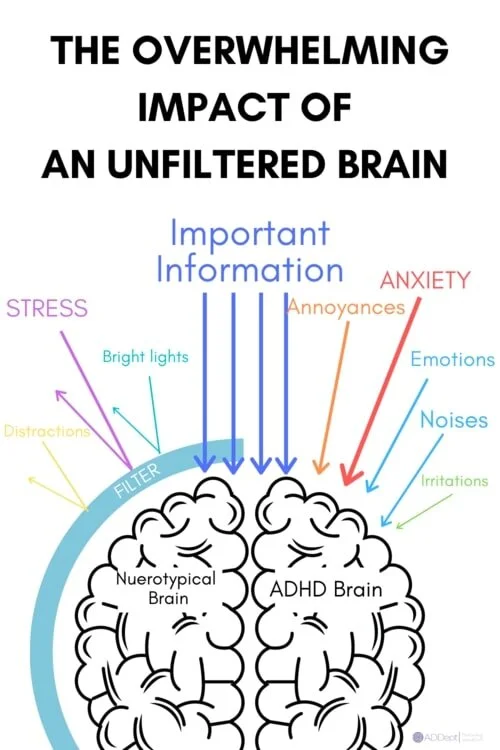Exploring the Potential of Somatic Therapy for ADHD
Somatic therapy is a powerful model of treatment that seeks to address mental and physical suffering through body-centered techniques.
In recent years, it has begun to attract attention among therapists and patients dealing with various mental health conditions, notably Attention-Deficit/Hyperactivity Disorder (ADHD).
ADHD is a complicated disorder that affects both adults and children, causing difficulties in concentration, organization, and impulse control.
Despite the multitude of treatment options available, many individuals with ADHD still grapple with debilitating symptoms. Hence, therapeutic models like somatic therapy can be integral weapons in the fight against this persistent condition.
For those unfamiliar with it, somatic or body-based therapy is a subset of psychotherapy that emphasizes the role of the body in mental well-being.
Derived from the Greek word ‘soma’, meaning body, somatic therapy reconnects individuals to their physical avatars. It’s rooted in the principle that the mind and body are inextricably linked – changes in one affect the other.
Hence, it leverages body-oriented methods to help patients uncover and address deeply-buried, often unconscious emotional issues.
Techniques range from traditional talk therapy to other body-focused practices like deep breathing, mindfulness, and movement.
This article aims to explore the potential of somatic therapy for those with ADHD. We will delve into the principles behind this therapy, discuss why it may be especially beneficial for ADHD patients, and share real-world examples to illustrate its efficacy.
Our goal is not just to inform but also to expand the dialogue around ADHD treatment. We encourage readers to view this therapy not as a magic fix but as another useful tool in the overall management of ADHD.
Explanation of the Brain-Body Interaction

Introduction to the Concept of Brain-Body Connection
Scientists and researchers across different fields agree that the human body and brain are interactively connected, and no one system operates in isolation.
This biofeedback loop between someone’s thoughts, feelings, and behaviors within their physical state is a fundamental aspect of the human existence.
Our brains aren’t merely controlling hubs that direct bodily functions; they also receive and process signals sent back from the body.
This close interaction between neurological operations and physical responses results in behaviors and emotions we display.
In other words, our body’s movements and internal processes affect mental states, while our emotions and cognition influence physiological operations.
The ADHD Brain

ADHD is a neurodevelopmental disorder, which affects the frontostriatal circuits, among other regions of the brain. It manifests as difficulty with concentration, emotional regulation, and impulsive behavior.
ADHD’s brain-body interconnections can heighten or dampen various bodily responses, influencing behaviors.
For instance, ADHD-affected brains often grapple with hyperarousal – a state of overactivity both mentally and physically.
Simultaneously, sluggish cognitive tempo, another subset of ADHD, might slow down one’s mental and physical pace.
The Somatic Connection
Somatic therapy leverages the brain-body connection to help those with ADHD uncover the roots of their symptoms and create effective coping mechanisms.
By focusing on the body as well as the mind, these healing methods aim to address the complete individual.
Somatic therapy plays a significant role in re-establishing a healthier brain-body communication.
Techniques like touch therapy, body awareness therapy, somatic movement therapy, and bioenergetic bodywork techniques are used to tap into the body’s wisdom.
These techniques help ADHD individuals to channel their thoughts through their physical body to harness the body’s inherent ability to self-regulate and heal.
Practitioners believe the body holds integral information about our experiences, and somatic therapy can access this knowledge to aid healing.
Through this therapy, ADHD individuals can learn to reconnect their mind and body, growing their awareness of their physical and emotional reactions.
This holistic healing method provides tools and techniques to manage their symptoms effectively, empowering them to take active steps towards achieving well-being.
Case Studies and Research into Somatic Therapy for ADHD
Overview of Research Status
Research around the benefits of somatic therapy, especially when it comes to ADHD treatment, is still budding, and the scientific community does not yet have a consensus.
Yet, the few studies available illustrate its efficacy in treating a variety of issues, from trauma to chronic stress, paving the pathway for its potential in addressing ADHD symptoms.
Somatic Experiencing Therapy and Emotional Release Therapy, for instance, have shown promise in helping regulate emotions, something that’s often a challenge for those with ADHD.
Moreover, body awareness therapy has been used successfully to aid people in gaining a better understanding of their physical reactions to emotional triggers.
This understanding and self-awareness can prove incredibly beneficial in managing the various challenges that come with ADHD.
Case Studies
Although traditional clinical studies on somatic therapy’s benefits for ADHD are few and far between, anecdotal evidence and case studies tell a more compelling story. They explore how varied forms of body therapy techniques like Somatic movement therapy,
Bioenergetic bodywork techniques, or Holistic healing methods have been used to effectively help those with ADHD. Take for instance the case of a young boy with ADHD who participated in a year-long program focusing on somatic attachment therapy.
He was asked to recognize and regulate his physical responses to different emotional triggers through various exercises emphasizing body awareness.
As the year progressed, significant improvements were observed in his ability to concentrate, control impulses, and manage emotions.
His parents reported a decrease in disruptive behaviors at home, and his teacher noted improvements in his academic performance and social interactions.
Interpretation of Results
While more extensive and rigorous research is undoubtedly required, preliminary case studies and anecdotal evidence suggest that somatic therapy may offer a supplemental, if not central, role in treating ADHD.
Especially considering how the symptoms of this disorder overlap with the core areas where somatic approaches excel – emotional regulation, body awareness, impulse control, and stress management – suggest its potential benefits for ADHD.
However, limitations exist – predominantly, a need for a larger quantity of empirical studies to solidify somatic therapy’s utility for ADHD.
Secondly, somatic therapy is a broad field, incorporating various approaches and techniques, making it challenging to pin down its universal effectiveness for ADHD.
Despite these challenges, the compelling results gathered from the existing case studies serve as promising stepping-stones for future research in this area.
They certainly suggest that more clinical trials and research focused on somatic therapy’s impact on ADHD are warranted, especially given its potential to bring about significant improvements in the patients’ quality of life.
Practical Implications and Considerations of Somatic Therapy for ADHD

Benefits of Somatic Therapy for Individuals with ADHD
Somatic therapy offers various potential benefits for managing ADHD symptoms.
The inherent focus on the brain-body connection aligns well with the physically manifested traits often seen in individuals with ADHD, such as feeling restless or fidgety.
These somatic healing methods also offer individuals an expanded toolkit for navigating emotional regulation, which can significantly impact the quality of life for those dealing with ADHD.
By incorporating techniques such as body awareness therapy and somatic movement therapy, individuals can gain a deeper understanding of their bodies.
This can foster a healthier relationship with feelings, thoughts, and impulses, leading to improved coping mechanisms and symptom management.
Considerations for Practical Implementation
While somatic therapy offers exciting potential for managing ADHD, implementing this approach practically warrants careful considerations. Cost and accessibility can be a challenge.
Not all therapists are trained in body therapy techniques like Bioenergetic bodywork techniques or Emotional Release Therapy, so it may involve seeking a specialist or investing in additional resources.
Further, while somatic therapy may be beneficial, balancing it with other treatments – perhaps medication or cognitive-behavioral therapies – is usually required.
Since every person’s ADHD experience is unique, what works well for one may not have the same effect for another, so a multi-faceted, personalized approach is usually most beneficial.
Lastly, like any new therapeutic approach, there may be challenges and discomfort in the initial stages. However, these are likely to decrease as the individual becomes more acclimated to the techniques and begins to experience their benefits.
Guidance for ADHD Patients and Their Families
If you or a loved one has ADHD and is considering the usage of somatic therapy, it is essential to keep an open mind and patient attitude.
The techniques, like Somatic Attachment Therapy or Somatic Integrations Methods, are different from traditional therapies, and it may take time to adapt and feel comfortable.
Prioritize finding a therapist who resonates with you. This person should offer a safe environment, be well-versed in somatic healing methods, and open to adjusting the therapy to suit your specific needs.
It’s also worth noting that somatic therapy for ADHD is not meant to be a standalone cure but instead a part of holistic management.
In conjunction with other forms of therapy and treatment, somatic therapy could provide a much-needed boost for managing ADHD effectively.
Transitioning to this kind of therapy should be gradual, allowing the individual time to adapt and grow comfortable.
It will require patience and persistence, but the potential benefits are well worth the effort.
In conclusion, somatic therapy could offer a valuable perspective shift for those with ADHD, offering the potential for better symptom management and the opportunity to live a more balanced, embodied life.
III. Conclusion
Recap of the Blog’s Exploration About the Potential of Somatic Therapy for ADHD
Throughout this article, we’ve delved deep into the potential of somatic therapy for managing ADHD.
We’ve explored the foundation of this approach – the intricate interconnection between the mind and body. We dove into the manifestation of ADHD in the brain and the body and how somatic therapy methods like Somatic Attachment therapy, Body Awareness Therapy, or Holistic Healing
Methods tap into these connections to address ADHD’s symptoms effectively.
We examined the current state of research regarding somatic therapy for ADHD, shared some promising anecdotal and case studies and discussed intriguing implications and considerations for using this therapeutic approach.
Research, though limited, hints at the potential of somatic therapy, complementing traditional approaches to manage ADHD effectively.
Encouraging and Guiding Words for Those Considering Somatic Therapy for Dealing with ADHD
If you or a loved one are grappling with ADHD, know that somatic therapy could be a beneficial addition to your treatment regime.
It might seem a bit out of the ordinary compared to conventional therapy methods, but the results so far promise potential improvements in overall symptom management and quality of life.
The brain-body connection, the foundation of somatic therapy, can provide a unique perspective and coping mechanisms that can enhance emotional regulation, stress management, and impulse control.
It encourages mindful awareness of one’s body and emotions and teaches practical ways to translate this awareness into meaningful changes in dealing with ADHD.
The journey maybe a little challenging, and there may be a period of adjustment.
However, with patience, persistence, and the right therapist, somatic therapy can truly change the landscape of ADHD treatment, adding a deeper dimension to spark a more thorough, holistic healing process.
Whether you seek emotional release therapy, body awareness therapy, or any other form of somatic therapy, remember, the goal is not to cure but to manage, not to suppress but to understand, and not just to cope but to thrive.
Remember, every step, no matter how small it seems, brings you closer to a healthier, more balanced life. Somatic therapy could just be the powerful ally you’ve been looking for in your battle against ADHD.


